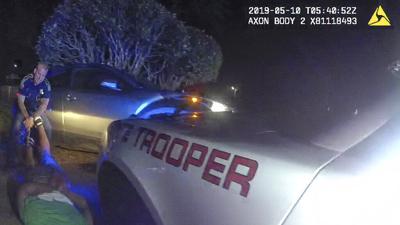Friends and relations of Ronald Greene are disappointed that the cops allegedly responsible for his death are not facing more serious charges.
Greene's mother and sister are among those who believe he was “murdered“ when beaten to death on a Union Parish roadside one night in 2019. The gravest rap in the indictment, carrying a maximum of five years in prison, is negligent homicide. It was filed against Kory York, one of the state troopers accused of laying into Greene after a high-speed chase.
In fact, it is highly unlikely that a first- or second-degree murder charge would have held up, since under state law both require a “specific intent to kill or to inflict great bodily harm.”
On the scene, in addition to York, were four other troopers, of whom one was killed in a car crash shortly afterward, and one Union Parish deputy. Proving beyond a reasonable doubt that one or more of the surviving officers harbored the requisite mindset would have been practically impossible.
But the significance of the Greene case goes far beyond whatever punishment is handed out to his killers.
It has taken this long to establish what happened because State Police procrastinated, lied and suppressed evidence. It is a fair bet that has been their modus operandi in other cases we don't know about.
What we do know is that motorists are more likely to be pulled over if, like Greene, they are Black. According to the official account, cops pulled Greene over for some unspecified traffic violation, but he took off, eventually suffering a heart attack when he crashed on a rural highway. Greene's relatives say they were initially told he crashed into a tree.
Police said there was no bodycam footage of Greene's final moments, but they were lying.
The lie was exposed last year when The Associated Press obtained the video from the scene that showed Greene being tasered and brutalized.
In the future, we should never have to take cops' word for what happened at an arrest scene, since bodycams have become standard equipment. Errant cops could, and clearly did, mislead us for a while this time, but technology caught up with them.
One of the troopers who beat up Greene, Chris Hollingsworth, died in a single-car crash shortly after being told he would be fired. Of the rest, York faces the most severe penalty, since, in addition to the negligent homicide charge, he was indicted on 10 counts of malfeasance, each punishable by up to five years. The ranking officer at the scene, Lt. John Clary, who tried to cover up the bodycam footage, has been indicted for malfeasance and for obstruction, each carrying a maximum of five years.
Trooper Dakota DeMoss and retired Capt. John Peters each face up to five years for obstruction, while Union Parish Deputy Chris Harpin was indicted on three counts of malfeasance for a potential total sentence of 15 years.
Footage shows York dragging Greene by his leg shackles before he was left for more than nine minutes face down in the dirt, and there can be no doubt that the cops killed him.
It is rare for cops to face charges for violence against suspects, but that could change if they don't clean up their act in this new age of transparency.
Email James Gill at gill504nola@gmail.com.

